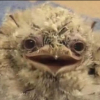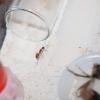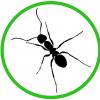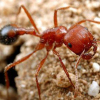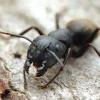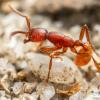- Formiculture.com
- Forums
- Gallery
- Members
- Member Map
- Chat

I need help identifying possible queen I found in a tree
Started By
Idontexist
, Jun 7 2021 12:03 PM
31 replies to this topic
#21
 Offline
-
Posted June 7 2021 - 8:33 PM
Offline
-
Posted June 7 2021 - 8:33 PM
I don't think iys a camponotus mayor since its torso is black
I don't think iys a camponotus mayor since its torso is black
I don't think iys a camponotus mayor since its torso is black
#22
 Offline
-
Posted June 7 2021 - 11:26 PM
Offline
-
Posted June 7 2021 - 11:26 PM
I don't think iys a camponotus mayor since its torso is black
I don't think iys a camponotus mayor since its torso is black
that's not quite how it works, but regardless this is most likely a major (not a queen)
#23
 Offline
-
Posted June 8 2021 - 4:31 AM
Offline
-
Posted June 8 2021 - 4:31 AM
Smh looks like I'll have to explain every reason this is literally a Camponotus major and not a queen. Here we go:
First off, the thorax's shape. In case you've never actually seen a queen, you shouldn't go off of just size. The thorax is very much shaped like that of a major. It's curved down, the top bit doesn't go higher than the head, and it curves downwards. Queen's thorax's are much more rectangular.
Then, the gaster. Do you see how skinny she is? Usually, Camponotus species has very thick gasters and longer. This one has a very circular one compared to the more oval ones of the queens. The only time you'll see this is in parasitic species and semi-claustral species (there are no known parasitic or semi-claustral Camponotus species.
Finally, the wing scars! Wing scars are probably the best way to tell a queen (not mentioning gamergates and species that have what I call "Nuptial Walks") is the wing scars. Basically, a queen will usually rip of her wings and lay eggs. However, there are no wing scars here.
And now, preparing just incase, how do I know it's actually Camponotus species? Well I'm glad I asked. Generally, the genus Camponotus can be defined from all physical features. The only other genus you're likely gonna get Camponotus mixed up with is Formica, and luckily in the America's there's a good way to tell the two apart: Formica has a bumpy back, Camponotus is smooth. If the ant is going to fast you can also tell by size. Although Formica can have polymorphism, it is nowhere even close to that of Camponotus.
Edit: Idontexist, that means nothing. Colouration is usually only for species, not queens. However in some species it can be used, but practically never depended on. Also ants don't have torsos...
Edited by Chickalo, June 8 2021 - 4:34 AM.
- MinigunL5, Antkeeper01, Antcatcherpro3 and 1 other like this
シグナチャーです。예.
#24
 Offline
-
Posted June 8 2021 - 4:53 AM
Offline
-
Posted June 8 2021 - 4:53 AM
#25
 Offline
-
Posted June 8 2021 - 4:56 AM
Offline
-
Posted June 8 2021 - 4:56 AM
#26
 Offline
-
Posted June 8 2021 - 5:43 AM
Offline
-
Posted June 8 2021 - 5:43 AM
oh wait. I take back what I said. It seems like a major but if the lighting in the pic were a little bit stronger I could see better if it has wing scars.
It is most definitely a major. No Camponotus queen has that body shape.
And no offense, Idontexist, but I am going to ask you to please follow rule #7 and use proper English. I understand typing on mobile can be hard (I have experienced it first hand), but there is an edit tool that you can use to fix spelling errors after you have made a post.
Edited by Kaelwizard, June 8 2021 - 5:44 AM.
- PetsNotPests likes this
#27
 Offline
-
Posted June 8 2021 - 8:57 AM
Offline
-
Posted June 8 2021 - 8:57 AM
Sadly, that's not a queen. Looks to be ether a C. Pennsylvanicus or Modoc major.
Ants are Pets, not Pests.
-Camponotus sansabeanus
-Camponotus US-CA02
-Camponotus vicinus
-Formica podzolica
-Monomorium spp.
-Pogonomyrmex californicus
-Solenopsis spp.
#28
 Offline
-
Posted June 8 2021 - 9:05 AM
Offline
-
Posted June 8 2021 - 9:05 AM
I don't think iys a camponotus mayor since its torso is black
I don't think iys a camponotus mayor since its torso is black
A black torso doesnt make an ant a queen. Just because it has a black torso doesnt mean its a queen. I'm almost positive its not a queen.
Edited by Broncos, June 8 2021 - 9:06 AM.
Currently Keeping:
Pogonomyrmex Californicus Bicolor & Concolor
Pogonomyrmex Subnitidius
Camponotus Sansabeanus
#29
 Offline
-
Posted June 9 2021 - 5:45 AM
Offline
-
Posted June 9 2021 - 5:45 AM
oop sorry accidentally posted. yea just ignore this.
Edited by azzaaazzzz00, June 9 2021 - 5:52 AM.
Been keeping ants since January of 2021
Always try new things, even if its hard, hard is not impossible. We are smart and it's good to be smart but not too smart for your own good.
Always try new things, even if its hard, hard is not impossible. We are smart and it's good to be smart but not too smart for your own good.
#30
 Offline
-
Posted June 9 2021 - 10:16 AM
Offline
-
Posted June 9 2021 - 10:16 AM
oh wait. I take back what I said. It seems like a major but if the lighting in the pic were a little bit stronger I could see better if it has wing scars.
It is most definitely a major. No Camponotus queen has that body shape.
And no offense, Idontexist, but I am going to ask you to please follow rule #7 and use proper English. I understand typing on mobile can be hard (I have experienced it first hand), but there is an edit tool that you can use to fix spelling errors after you have made a post.
I know. I was just tired when I saw that cause a sleepy brain is a no good brain but yeah that's a major.
- Antkeeper01 and Chickalo like this
#31
 Offline
-
Posted June 9 2021 - 12:19 PM
Offline
-
Posted June 9 2021 - 12:19 PM
Eef, another accidental post... ![]()
Edited by azzaaazzzz00, June 9 2021 - 12:20 PM.
- Chickalo likes this
Been keeping ants since January of 2021
Always try new things, even if its hard, hard is not impossible. We are smart and it's good to be smart but not too smart for your own good.
Always try new things, even if its hard, hard is not impossible. We are smart and it's good to be smart but not too smart for your own good.
#32
 Offline
-
Posted June 9 2021 - 12:45 PM
Offline
-
Posted June 9 2021 - 12:45 PM
Idontexist, here is a link to assist you in technical terminology as you communicate with other members, especially for those who seem to have little patience with those just getting their feet wet in keeping ants. https://www.antwiki....and_Terminology
Also, when you do post regarding an identification query there are rules proved on the homepage to assist you in framing your query so others may offer expedient and reliable responses. The more information the better. Also, try your best to have as high resolution and clear images as possible. Images from various perspectives: dorsal, ventral, lateral, head, mandibles are always appreciated.
- gcsnelling, Kaelwizard and UtahAnts like this
1 user(s) are reading this topic
0 members, 1 guests, 0 anonymous users


